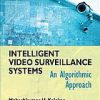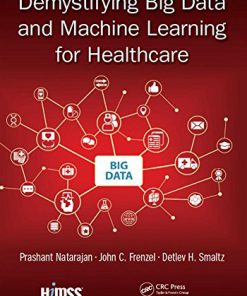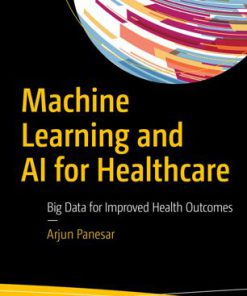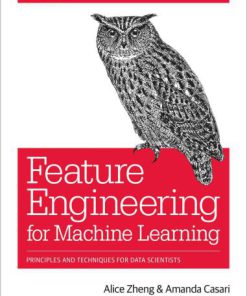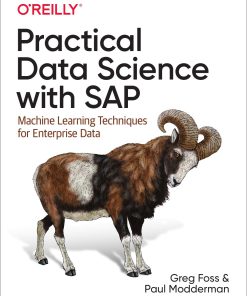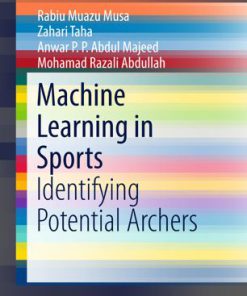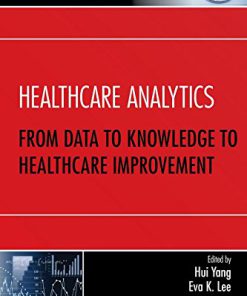Data Driven Approaches for Health Care Machine learning for Identifying High Utilizers 1st Edition by Chengliang Yang, Chris Delcher, Elizabeth Shenkman, Sanjay Ranka ISBN 9781000701258 1000701255
$50.00 Original price was: $50.00.$25.00Current price is: $25.00.
Data Driven Approaches for Health Care Machine learning for Identifying High Utilizers 1st Edition by Chengliang Yang, Chris Delcher, Elizabeth Shenkman, Sanjay Ranka – Ebook PDF Instant Download/Delivery: 9781000701258 ,1000701255
Full download Data Driven Approaches for Health Care Machine learning for Identifying High Utilizers 1st Edition after payment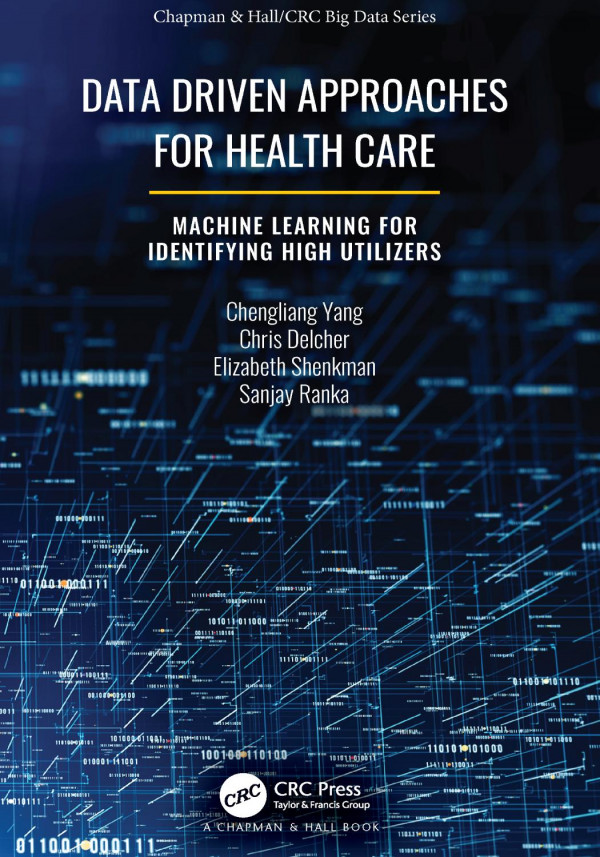
Product details:
ISBN 10: 1000701255
ISBN 13: 9781000701258
Author: Chengliang Yang, Chris Delcher, Elizabeth Shenkman, Sanjay Ranka
Data Driven Approaches for Health Care Machine learning for Identifying High Utilizers 1st Edition Table of contents:
Chapter 1: Introduction
1.1 MOTIVATION
1.2 GOALS OF DATA-DRIVEN APPROACHES FOR HIGH UTILIZERS
1.3 CHALLENGES
1.4 BOOK ORGANIZATION
Chapter 2: Overview of Health Care Data
2.1 TYPE OF HEALTH CARE DATA
2.2 STRUCTURE OF HEALTH CARE DATA
2.2.1 Structured Health Care Data
2.2.1.1 Diagnosis Codes
2.2.1.2 Procedure Codes
2.2.1.3 Pharmaceutical Codes
2.2.2 Unstructured Health Care Data
2.3 COMMON DATA SOURCES FOR HIGH UTILIZERS
2.3.1 Administrative Claims Data
2.3.2 PCORnet Common Data Model
Chapter 3: Machine Learning Modeling from Health Care Data
3.1 SUPERVISED MODELS
3.1.1 Ordinary Least Squares Linear Regression (LR)
3.1.2 Regularized Regression (LASSO)
3.1.3 Gradient Boosting Machine (GBM)
3.1.4 Recurrent Neural Networks (RNN)
3.2 INTERPRETING SUPERVISED MODELS
3.2.1 Global Interpretation: Understand Trained Model
3.2.2 Local Interpretation: Understand Each Prediction
3.2.3 Prediction Confidence
3.2.3.1 Voting and Consensus Rate
3.2.3.2 Providing Confidence Intervals
3.3 UNSUPERVISED MODELS
3.3.1 Clinical Phenotyping
3.3.2 Behavioral Phenotyping: Clustering Inter-Arrival Time of Health Care Encounters
3.3.2.1 Histogram Representations of Asynchronous Time Series
3.3.2.2 Wasserstein Distance
3.3.2.3 Spectral Clustering
3.4 DISCUSSION
Chapter 4: Descriptive Analysis of High Utilizers
4.1 THRESHOLD-BASED METHODS FOR FREQUENT EMERGENCY DEPARTMENT USERS
4.1.1 Background
4.1.2 Methods
4.1.2.1 Approach
4.1.2.2 Study Population
4.1.2.3 Operational Definitions
4.1.2.4 Medical Expenditures
4.1.2.5 Enrollee Sociodemographics
4.1.2.6 Diagnostic History
4.1.2.7 New York University ED Profiling Algorithm
4.1.2.8 Frequent and Persistent Users
4.1.2.9 Annualized Visits
4.1.2.10 Statistical Analyses
4.1.3 Results
4.1.4 Characteristics of ED Users
4.1.4.1 Limitations
4.1.5 Discussion
4.1.5.1 Sociodemographics
4.1.5.2 Setting-Specific, High-Frequency Use
4.1.5.3 Cost Concentrations
4.1.5.4 Chronic, Comorbid Conditions, Mental Illness, and SUDs
4.1.5.5 Inappropriate and/or Avoidable Visits
4.1.5.6 Persistence
4.2 TEMPORAL CONSISTENCY OF HIGH UTILIZERS
4.2.1 Background
4.2.2 Methods
4.2.2.1 Data
4.2.2.2 Experiment Setup
4.2.3 Results
4.2.3.1 Entire Adult Population
4.2.3.2 Temporal Correlation for the Top 10% Population
4.2.3.3 Chronic Conditions Cohorts
4.2.4 Discussion
Chapter 5: Residuals Analysis for Identifying High Utilizers
5.1 BACKGROUND
5.2 DATA AND METHODS
5.2.1 Study Population
5.2.2 Data Preprocessing
5.2.3 Model
5.2.3.1 Linear Regression
5.2.3.2 Tree-Based Model
5.2.4 Fitting the Model
5.2.4.1 Fitting Linear Regression
5.2.4.2 Fitting Tree-Based Model
5.2.5 Identifying the High Residuals Population
5.2.6 Breakdown Residuals
5.2.7 Stratified Model
5.3 RESULTS
5.3.1 Compare Linear Regression and Tree-Based Model
5.3.2 Characterizing the High Utilizers
5.3.2.1 Demographics, Health Conditions, and Utilization
5.3.2.2 Temporal Consistency of Residuals
5.3.3 Breakdown Residuals to ICD-9-CM Codes
5.3.3.1 Essential Hypertension
5.3.3.2 Chronic Kidney Disease
5.3.4 Stratified Models by Service Settings
5.3.4.1 Residuals and Potentially Preventable Readmissions (PPR)
5.3.4.2 Residuals and Potentially Preventable Emergency Department Visits (PPV)
5.3.4.3 Residuals and Future Potentially Preventable Events
5.4 DISCUSSION
Chapter 6: Machine Learning Results for High Utilizers
6.1 PREDICTING HOSPITAL READMISSIONS
6.1.1 Background
6.1.2 Data and Methods
6.1.2.1 Dataset
6.1.2.2 Methods
6.1.2.3 Regularized Logistic Regression (LASSO)
6.1.2.4 Gradient Boosting Machine (GBM)
6.1.2.5 Deep Neural Networks (DNN)
6.1.3 Results
6.1.3.1 Prediction Accuracy
6.1.3.2 Interpret Models and Predictions
6.1.3.3 Prediction Confidence
6.1.4 Discussion
6.2 PREDICTING HEALTH CARE EXPENDITURE
6.2.1 Background
6.2.2 Methods
6.2.2.1 Data
6.2.2.2 Objectives
6.2.2.3 Predictors
6.2.2.4 Predictive Models
6.2.2.5 Model Selection and Validation
6.2.3 Prediction Performance
6.2.3.1 Baseline
6.2.3.2 Choice of Period Length
6.2.3.3 Using Additional Information
6.2.3.4 Including Additional Prior Periods
6.2.4 Interpreting the Models
6.2.5 Choosing the Best Model
6.2.6 Discussion
6.3 CLUSTERING ASYNCHRONOUS HEALTH CARE ENCOUNTERS TIME SERIES
6.3.1 Emergency Department Visits Time Series
6.3.2 Inpatient Hospital Stays Time Series
6.3.3 Discussion
Chapter 7: Conclusions
Appendix A: Acknowledgment
Bibliography
Index
People also search for Data Driven Approaches for Health Care Machine learning for Identifying High Utilizers 1st Edition:
data-driven approach examples
data driven decision making healthcare
data-driven healthcare solutions
data driven approaches in healthcare challenges and emerging trends
Tags:
Chengliang Yang,Chris Delcher,Elizabeth Shenkman,Sanjay Ranka,Approaches,Health Care,Machine,Identifying,High Utilizers
You may also like…
Computers - Computer Science
Computers - Computer Science
Feature Engineering for Machine Learning and Data Analytics First Edition Dong
Uncategorized
Computers - Computer Science
Practical Machine Learning for Data Analysis Using Python 1st Edition Abdulhamit Subasi
Computers - Computer Science
Computers - Computer Science


